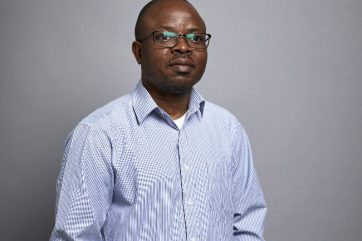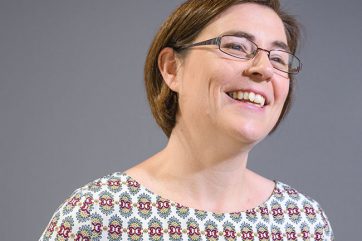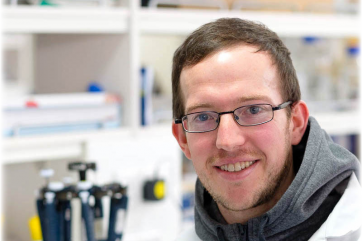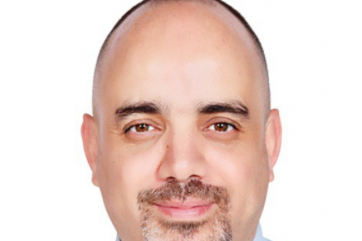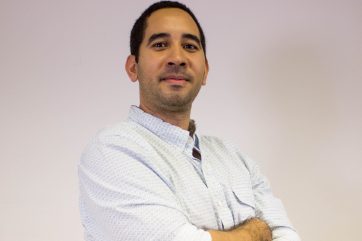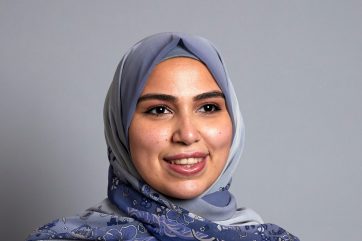MERI Visitor Bagdagul shares her plans for collaboration between Hallam and Kocaeli Uni
It’s another Spotlight edition!
Our Spotlight articles aim to shine a light on the people that make up the Industry and Innovation Research Institute (I2Ri). Alongside the BreakThru Research podcasts on Spotify hosted by Márjory Da Costa-Abreu, we hope this will be a great way to celebrate our successes and get to know our researchers more.
This edition, we caught up with Bagdagul Karaagac to find out a bit more about her and her work as a visiting researcher in I2Ri.

“I am really impressed by SHU’s perspective, which focuses on turning scientific knowledge to innovative solutions to industrial problems. I believe that we can develop a continuous and very efficient collaboration between Sheffield Hallam and my home institute Kocaeli University.”
Please can you tell us a bit about yourself?
I am a researcher. I have been working at the Chemical Engineering Department, Kocaeli University, Turkey, where my research focuses primarily on rubber science and technology.
I’m trying to act as a bridge between industry and the world of academia by conducting industry-oriented development projects for real life application.
What path led to your current work and becoming a visiting researcher at SHU
I moved to the UK because of my husband’s new job. I worked hybrid for my home institution for a while. But I love to be in an atmosphere where I can get inspired, and I can make the success bigger by working with other researchers.
I was really impressed by SHU’s perspective, which focuses on turning scientific knowledge to innovative solutions to industrial problems.
Luckily, I met with Prof. Andrew Alderson and Prof. Chris Sammon and could find an opportunity to talk about exciting topics that we can work on together at SHU.
What is the most exciting thing about your work? What are some of the challenges?
I really enjoy developing new materials for making people’s lives safer and more comfortable.
Although most people are not aware, rubber-based materials are an important part of our daily life.
Rubber is used not only in tyres and hoses, but also used in trainers, gloves, bridge bearings, seismic isolators, and even in inhalators that were used extensively during pandemic.
However, all these materials contain lots of environmentally unfriendly components. I believe that we can find natural, or at least less hazardous alternatives to most of these components to contribute to a sustainable world, to leave a cleaner world to the children without giving up the comfort and safety.
Who or what inspired you to pursue your career?
I can say that I feel a responsibility to the people who died in the 1999 earthquake in my city. I had just graduated from university then.
They entrusted the children of those who died to us, and I had to do something for these children in my professional life.
This was not only to look after them or to buy some toys but also to protect them from the devastating effects of another earthquake, which would likely occur.
So, high performance seismic rubber isolators are still the hottest topic of my research.
Can you share a turning point or defining moment in your work as a researcher?
Just after I completed my PhD, I was already exhausted to be honest, but I had realised that there were a few younger and very clever students following me.
Then I decided not to slow down and to do my best to inspire them. Now, we are still working with them very closely.
What advice would you give to someone who was looking to embark on a career in research?
I advise them to do research on the topics that they want to research. I believe that this is the key for creative ideas and transforming something.
I also advise them never to compete with others, but to be inspired by their own success.
What do you most enjoy about teaching? What are the challenges?
Thermodynamics. I enjoy teaching Thermodynamics. I find it pretty like Philosophy.
I enjoy getting some clever questions from the students that I’ve never thought about. This makes me feel successful because someone could pick what I try to teach and improve the knowledge with their own contribution.
However, the challenge in teaching for me is not to have the same energy to teach day after day.
What objectives do you hope to fulfil during your time at SHU?
I’m planning to complete a specific research project, which is now in the NDA process between Sheffield Hallam and a really very big international company.
In that research, I’m planning to combine already obtained data with data to be obtained by using impressive characterization facilities in MERI to create an advanced level of scientific data. This of course will be possible by working closely with MERI’s friendly experts.
The topic is to replace a common stabilizer for rubber and especially tyre compounds with a natural alternative obtained from a very well-known and abundant plant. That common stabilizer is toxic enough to kill some sensitive fish species such as Coho Salmon.
I have many exciting projects to perform at MERI but I can mention another very hot one. It is to start developing novel seismic isolators by combining smart auxetic materials with rubber.
I believe that we can develop a continuous and very efficient collaboration between Sheffield Hallam and my home institute Kocaeli University.
How can colleagues to collaborate with you on your research?
There is not any specific requirement. For example, an artist can make very aesthetic objects from the materials that I recycle from rubber waste.
What do you like to do when you’re not working on your research?
I have two children. Cooking for them, hiking with them if the weather allows are my favourites.
For me, it is not possible to work or not to work at specific times.
Sometimes I feel an irresistible desire to read a newly published article at night, sometimes I don’t want to do anything, just to refresh my mind.
This is useful and increases my efficiency.

